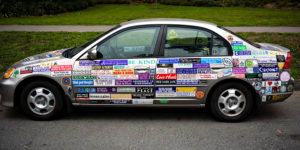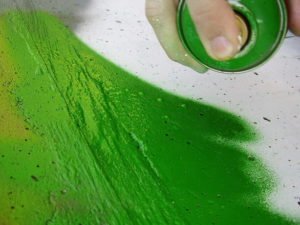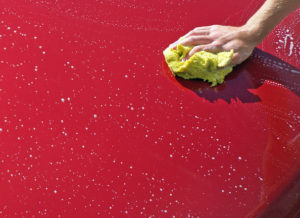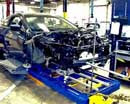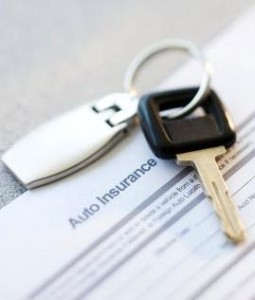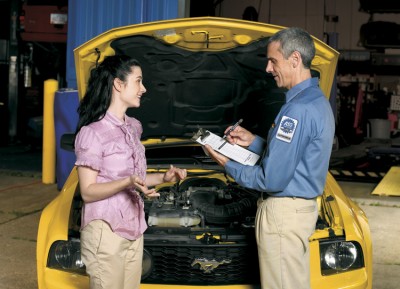
We liked an article we recently found on Edmunds.com with some great points for body shop consumers. We have summarized it in some areas, and expanded in others.
Here are some great points to help you learn why it pays to know what you’re looking at when you choose a shop to start your repairs.
Know That Body Shops Run the Quality Gamut
How true is it that when we shop for groceries, the various stores “run the gamut” of quality? We all know that some store brands aren’t as good as the name brands. That is just common knowledge.
The same is true when it comes to your body shop. In the article, a gentleman named Neal who is a shop owner says: “I don’t care what state you live in, for every 10 body shops, three of them are unethical and five of them do mediocre work at best.” We agree. It benefits the customer to build a relationship with the manager and/or owner of the shop. Knowing who you are doing business with is essential to getting repairs done correctly and at the right price. Some “chain” shops will do the bare minimum to keep the customers thinking they are getting a great deal, all while doing sub-par work and cutting lots of corners to save a buck. Beware of fantastically low initial estimates- hang on, we will get to that in just a second.
Pay attention to other people’s experience with the shop you are considering. Read reviews, ask around, and form a good picture of the history behind the shop. Are they backed by a warranty? If so, is that warranty nationwide or just to that particular shop? Are they trusted by the BBB? What happens if you are not 100% satisfied with the outcome of the repairs? What is your expectation of how the repairs should be done?
Understand Your Estimate
Sometimes, when you get a repair estimate at a couple of different places, the estimates are just polar opposites. Scary thought. In theory, the estimates should resemble one another in price-at least remotely. The explanation of some of this is best said from this article: “Our three experts remind us that collision-repair facilities and insurance companies use one of three systems for estimating repair jobs to arrive at standardized, impartial quotes. Theoretically, this means three different shops will present similar estimates. But insurance companies will sometimes present their policyholders with a low quote that bears no relationship to the product of these estimating systems, Brian says. And if the consumer decides he can live with minor body damage and elects to pocket the check rather than pay to have the damage repaired, the carrier has quickly cleared another claim.”
Part of the paradigm here, is something so simple that people forget very easily: parts are expensive these days! With all of the new and budding technology in metals, computer systems, and designs to vehicles, the prices have skyrocketed. It simply isn’t as cheap to fix what seems to be a “tiny bump” anymore.
Our very own expert and owner of Auto Innovations, Shelly Jackson, expands on this area: “One thing that I find most people don’t realize, is how many parts are designed to be “one time use” items. For instance, bumper covers (the part of the bumper that you see) are most of the time held on by clips, and those clips are designed to be put in place one time only. In other words, once you have an impact or remove them, they aren’t designed to go back on, and if we were to put them back on it would cause problems in the long run. After all, no one wants a bumper to sag or fall off a few months after a repair! These “one time use” parts can add up on the estimate, and be confusing to understand when you see them listed. Some shops will reuse the items; or will leave them off the initial estimate all together just to reduce the sticker shock, and get a customer in the door. All that just to add them later on for an additional cost- but, we will get to that in a minute.
In understanding an estimate, you want to realize that the insurance company is going to give the lowest estimate they possibly can in order to minimize their spending. They get paid your premiums, and believe us, they want to keep them. Know that when you get an estimate from a reputable body shop, they will attempt to be as comprehensive as possible on the front end. Being as thorough as possible up front can eliminate delays in repairs and many headaches later in the process.
Want to know more about the actual line by line of the estimate? Here are these tips from the article that we will explain:
Get an Estimate Breakdown
Make sure you understand the “line by line” from the shops you get estimates from. Some shops that are going to attempt a “bait and switch” to get you in the door will have a very simple estimate with only the largest parts listed to keep the costs low. Beware of these estimates. They may look simple and to the point to a customer, but may leave out important pieces that are necessary to complete the job. At this point one of two things will happen: 1. they will add them in later at the additional cost, or 2. they are going to attempt to cut corners, and for that, the customer looses both value in the repair and the car overall.
It is good to know that there will be what we know as “supplements” on the repairs. This is where we get into a repair, and find an unexpected broken part, or we learn that the original quoted price of a part has changed. In these cases, typically, the supplement is submitted to the insurance company and the customer may never even know it happens. If you are paying for the repairs yourself, the repair shop should always call to inform you before proceeding, and be able to provide you with verification of the change.
Turn Down the “Save the Deductible” Come-on
YIKES! We are always scared of this statement. Our owner, Shelly, was on the insurance side of the equation for over 7 years. She has learned the law on this particular subject and says that it is very dangerous territory.
Firstly, it IS ILLEGAL for anyone to “save the deductible” by over billing the insurance company for labor that they didn’t do at all, or for parts they never replaced. Here is what the article says: “The shop is basically offering to scam the insurance company for the consumer by not collecting the deductible payment. But Andy says that what such a shop is really intending to do is to either not perform necessary work, or overcharge for something to compensate for the waived deductible. “Collision repair shops are businesses, and like any business, can’t afford to not charge for work that is being performed,” Andy tells us. “If a shop says they can waive the deductible…that is something for consumers to be cautious of.”
Ask About the Parts
Parts aren’t always just parts. There are options. Aftermarket, recycled/used, new. Some insurance companies attempt to “require” the use of ‘aftermarket’ parts (parts that are essentially generic parts not made by the vehicle manufacturer) before they will dole out the cash for the dealer original parts, aka ‘OEM’ parts. It is important to know that the use of the aftermarket parts isn’t always a bad thing- especially if you are repairing an older vehicle and plan to pay out of pocket. However, a glaring majority of the time, they won’t fit properly, or not at all- and that makes a difference in the quality of the repair and resale value. In the event that the insurance company has this “requirement”, if the aftermarket parts do not fit, they will move on to new parts from the dealer. The body shop needs to document thoroughly what parts did not work and why, and the difference is then cleared by the insurance. The article says: “The aftermarket industry says its products are built to industry standards and are as good as those produced by the OEMs. Your decision on which to use likely depends on the age of your car, the size of your wallet and the terms of your insurance policy. In any case, make sure you get your body shop to define its terms. Will it use OEM parts? Aftermarket? New? Used? Will it repair and reuse a part from your car?”
Being informed about the parts used in your repair is essential in keeping the bottom line low, and the quality of the repair high.
Beware of Shops in Cahoots With Adjusters
Some shops attempt to get increased insurance business by “schmoozing” the adjusters. This relationship can cause the customer to get the raw end of the deal in the repairs they receive. If a shop is spending money and time to impress an insurance company, that is time they are NOT being the advocate for their customer. Shops know that the insurance company is attempting to keep every penny possible from being spent on repairs, and if the shop cuts corners to meet that low ball estimate, the customer ultimately suffers.
Bottom line: make sure you are being advocated for, the insurance company has PLENTY of advocates.
Don’t Get Pushed to “Preferred” Auto Body Shops
Here we are again with advocacy for YOU, the customer.
Let us first begin with a law. It is completely illegal for an insurance company to “steer” a customer to an insurance shop. The term steering simply means they are directing you to their shop, and a lot of the time, they do it by bullying. This is wrong. Insurance companies control these collision repair facilities by promising them steady work in exchange for corner-cutting, according to the insiders we interviewed. This control may encourage some body shops to “back charge,” or build in extra costs to cover areas not covered by the insurance company.
We have even heard directly from customers that insurance companies tell them that they will refuse to pay for things “if you don’t use one of our shops”. This practice is illegal. The things they like to say they won’t cover are things like: rental car, certain types of parts, and warranty on the repairs. When you are being bullied like this is when it pays to know your policy. For example, if it is written in the policy that you have, and pay for, rental coverage, they will cover it at the shop YOU choose. Sometimes with warranties on work, the insurance company won’t cover the repairs if you don’t use their “authorized” shop. This is NOT a reason to panic and use their shop. Any reputable shop will cover their product with a good warranty. For instance, we offer a lifetime nationwide warranty on all of our collision and finish work, and manufacturer warranty time on parts.
Be Your Own Advocate
In this area, we think the article says it right:
“Sad to say, the body shop experts we spoke with say that the consumer can’t rely completely on body shops or insurance companies to watch out for their interests. You have to act as your own advocate, choose the best shop and remain alert to overcharging and misrepresentation.”Most body shop owners are very concerned about getting good feedback and building a list of customers who’ll come back next time work is needed,” Andy says. “Find those shops, work with them, and nine times out of 10, things will go smoothly.”
 Have you ever wondered why your insurance company has a pre-arranged body shop for vehicle repairs? It’s because it’s in their best interest to have a place to send your damaged car to, because they can control the auto-body repair costs. If your insurance company owns the auto-body repair shop, they can dictate how much it costs, what parts they will pay for, and the quality of workmanship. They also don’t need a second opinion if they own the body shop, or employ the owner!
Have you ever wondered why your insurance company has a pre-arranged body shop for vehicle repairs? It’s because it’s in their best interest to have a place to send your damaged car to, because they can control the auto-body repair costs. If your insurance company owns the auto-body repair shop, they can dictate how much it costs, what parts they will pay for, and the quality of workmanship. They also don’t need a second opinion if they own the body shop, or employ the owner! Auto Innovations, Inc. Collision and Repair Center, Shelly Jackson. She knows all the insurance “tricks of the trade”. Shelly knows how to assess a vehicle after a collision- the right way. By doing a thorough inspection of the vehicle, not just guessing, all damages can be better accessed. This means that the vehicle may need to be partially dismantled to see all the damages. A typical on-site auto inspection can’t do that.
Auto Innovations, Inc. Collision and Repair Center, Shelly Jackson. She knows all the insurance “tricks of the trade”. Shelly knows how to assess a vehicle after a collision- the right way. By doing a thorough inspection of the vehicle, not just guessing, all damages can be better accessed. This means that the vehicle may need to be partially dismantled to see all the damages. A typical on-site auto inspection can’t do that.


